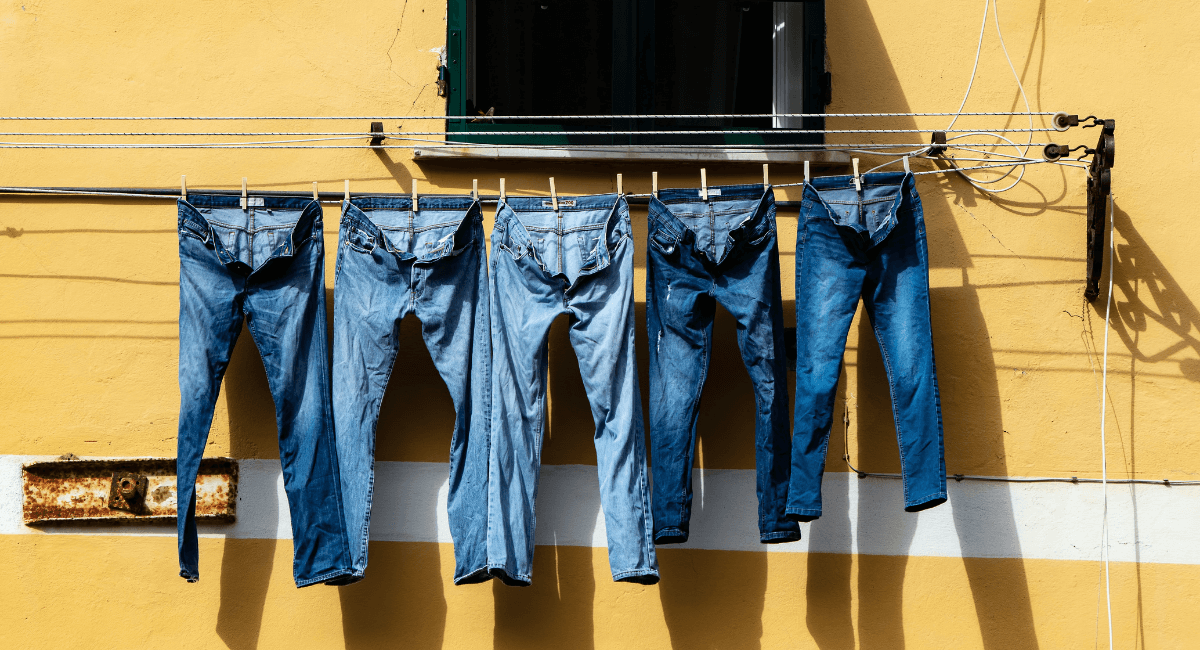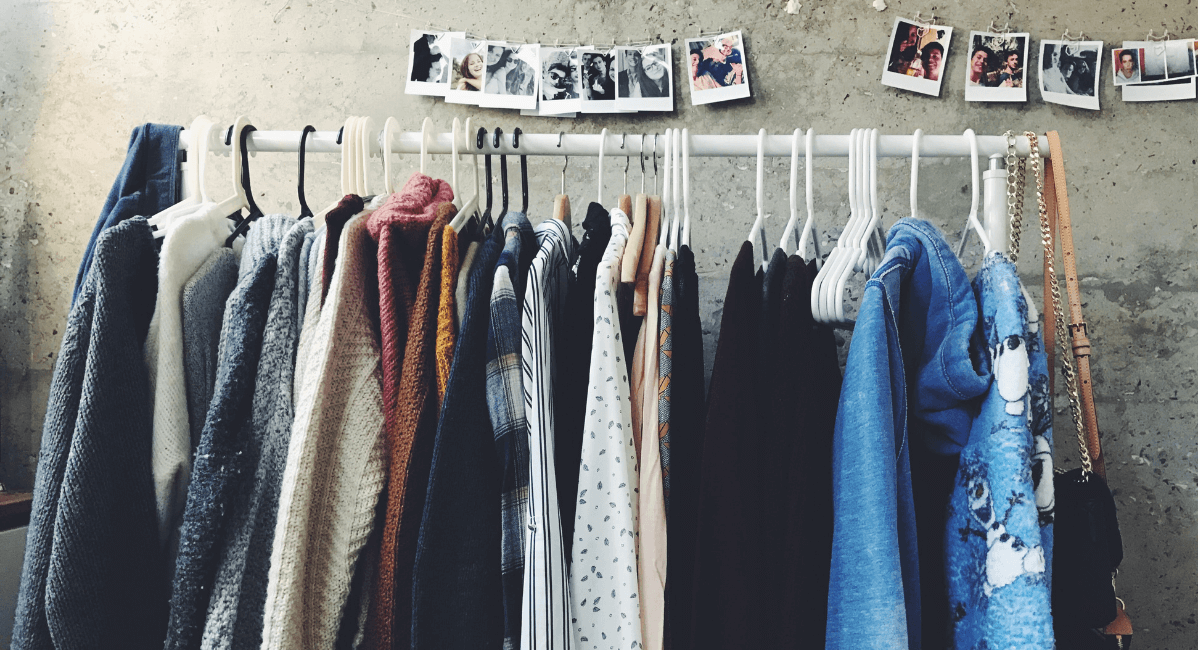
28 Eye-Opening Sustainable Fashion Statistics for a Cleaner 2024
Posted on | by Dunja Radonic
While fashion companies are still primarily interested in growing or at least maintaining their market share, they’re also eager to adopt environmentally responsible business models. After all, that’s what consumers worldwide want—and sustainable fashion statistics illustrate it.
So what is sustainable fashion?
The term refers to practises adopted by companies and consumers to reduce their negative environmental impact. Everything needs to be sustainable—from the moment a supplier starts growing the fibres for production to our decision to discard that constricting old pair of jeans.
Eco-friendly fashion isn’t just a fad—it’s an integral part of the global effort to reduce pollution and protect the planet. In this article, we’ll examine what the industry has done so far and what it still needs to do in its shift to more environmentally conscious modes of production.
Key Sustainable Fashion Facts and Stats (Editor’s Choice)
- The fashion industry is responsible for 2.1 billion tonnes of CO2 emissions each year.
- Only 17% of brands are transparent about their annual carbon footprint at raw material level.
- UK second-hand sales experienced an uptick in 2021, growing 27.2% compared to 2020.
- 75% of Gen Z respondents said they bought secondhand in order to reduce consumption.
- Searches for pre-order products grew 64% in 2021.
- Synthetic fibres account for 35% of microplastics released into the oceans.
- The sustainable fashion market revenue in the UK equalled £57 million in 2020.
- 93% of brands don’t pay their workers a living wage.
The Rise of Sustainable Fashion in Numbers
1. The interest in sustainable fashion brands in the UK is steadily growing.
(Google Trends)
Sustainable fashion data shows that the interest in sustainable fashion is growing. The trend peaked in July 2020, amid the COVID-19 pandemic and the nation’s rising health concerns. Its constant presence in global search engine queries over the last five years demonstrates that more and more people are taking the matter of environmentally friendly fashion seriously.
2. Close to one-fifth of UK consumers bought sustainable fashion items in 2020.
(Statista)
Market research related to sustainable fashion shows that only 4% of consumers in the UK claim to exclusively buy clothes from sustainable brands. Another 14% said they buy from both sustainable and non-sustainable brands. However, most respondents (67%) said they didn’t know if the clothes they purchased in 2020 were from eco-friendly brands.
3. 67% of consumers consider sustainable materials to be a factor in purchasing a fashion item.
(McKinsey)
In 2020, we saw a significant increase in climate change awareness. According to sustainable fashion statistics, 67% of consumers now pay attention to the environmental impacts of their clothing. Additionally, 88% believe that reducing pollution requires even more work. On that note, 60% say they started putting more effort into reusing and recycling items in 2020.
4. 53% of men and 47% of women in the UK buy from sustainable brands.
(Statista)
Sustainable fashion statistics for the UK indicate that men in the UK have a greater appreciation for sustainable brands than women. There’s also a difference in attitude among age groups. Namely, men aged 25–44 show more interest in buying sustainable brands. As for women, the preference for sustainable shopping was the highest in the 35–44 and 55+ age brackets.
5. 39% of UK consumers started buying fewer new items amid the pandemic.
(Deloitte)
This is one of the more encouraging eco-friendly fashion facts. Both environmental and economic concerns drove the trend of reducing purchases in 2020. However, this study focused on sustainability as the primary reason for consumers’ changing behaviours. To that point, 34% of respondents said they started buying from sustainable brands for environmental reasons.
6. The sustainable fashion market size in the UK equalled 57 million in 2020.
(Statista)
While this number is still minuscule compared to the rest of the fashion market, revenue from sustainable clothing in the UK has almost doubled since 2014. It has grown each year and the trend is accelerating.
7. UK second-hand sales experienced an uptick in 2021, growing 27.2% compared to 2020.
(Statista)
The UK boasts a flourishing second-hand market, with 42% of consumers saying more than half of their wardrobe consists of second-hand fashion items.
Fashion statistics show that tops and T-shirts make up the largest part of this number, with coats in second and dresses in third place.
8. UK fashion searches for the terms “organic”, “second-hand”, and “vegan” rose by 17% in 2020.
(Lyst)
Sustainable fashion trends show continuous increase in sustainable search terms on fashion websites. This rising interest in purchasing eco-friendly clothes corresponds with the growing number of sustainable fashion brands ranging from small businesses to larger corporations.
It’s reassuring that this growing interest isn’t exclusive to the UK. Other countries in this Lyst report also saw increases ranging from 14% in Russia to an impressive 114% in Denmark.
9. Lyst reported a 178% page view increase for “vegan leather” in 2021.
(Lyst)
Searches and views for biodegradable, recycled, vegan, and mushroom-based clothes and footwear grew significantly in 2021. While the interest in collaborations decreased somewhat, new trends in sustainable fashion show that people are interested in better materials, repairs, and deadstock clothing, which garnered 9.5 million views on TikTok.
10. Searches for pre-order products grew 64% in 2021.
(Lyst)
While social media plays a role in fueling fast fashion, it is also highly useful in rethinking the whole process and turning to slow fashion. Pre-ordering is a method of slow fashion, reducing waste and overproduction.
Following the growth of social commerce, in which fashion will have the highest share of all industries, slow fashion could become even more prominent.

Sustainable Fashion Industry Statistics
11. Only 12.5% of fashion companies pledged to implement the 2020 Circular Fashion System Commitment.
(Global Fashion Agenda)
In 2017, some of the world’s largest fashion companies joined the 2020 Commitment.
The goals aimed at transforming the companies’ business model to a more circular system include collecting and reselling pre-owned clothes, using recycled materials, and adopting circular design strategies.
Circularity is more than an ethical fashion trend, as evidenced by the Commitment’s encouraging results. While they didn’t reach all 207 set targets, the participating companies still achieved more than 63% of their goals over just three years.
12. The ethical fashion market decreased by 3.24% in 2020.
(Research and Markets)
The sustainable fashion market shrunk from $6.35 billion in 2019 to $6.14 billion in 2020 due to the COVID-19 pandemic and its adverse economic impact. But the sustainable fashion market size will keep growing in the coming years — experts predict it will reach $8.25 billion by 2023.
13. In the coming years, environmentally friendly clothing will be sustainable fashion’s fastest-growing segment.
(GlobeNewswire)
Eco-friendly production is at the centre of the sustainable fashion market, statistics show. Still, many ethical fashion segments overlap. Ethical fashion brands often try to address different issues, from animal cruelty and fair trade to inclusivity and workers’ rights.
The eco-friendly segment is projected to grow at an annual rate of 11.6% in the coming years, making it the market’s fastest-growing sector. Currently, animal cruelty-free is the largest ethical fashion segment with a 43.9% market share.
14. With a 77.4 score, H&M is Europe’s leader in sustainable cotton use.
(Statista)
H&M and C&A rank as Europe’s top two retailers in sustainable cotton policies. Although H&M has long been synonymous with fast fashion, its efforts in reorienting toward sustainable practises are setting standards for other fashion companies to follow.
Fashion industry statistics show that some of the largest companies have a long way to go. The lowest-ranked retailers on the cotton sustainability index are Zara’s parent company Inditex with a score of 15.9, the Irish retailer Primark with 16.7, and the UK-based New Look with 19.5.
15. In 2021, OVS and H&M were the most transparent about their environmental and social practises.
(Statista)
Among the world’s 20 most transparent fashion companies, OVS overtook H&M in 2021. OVS now ranks first with 78 points. H&M, The North Face and Timberland follow with 66 points each. Transparency is equally crucial for companies and for other businesses looking for examples and experiences they can learn from.
16. Only 17% of brands are transparent about their annual carbon footprint at raw material level.
(Fashion Revolution)
Many companies have pledged to improve their environmental and social impact. However. the Fashion Revolution’s Fashion Transparency Index shows that most companies don’t disclose the data at the raw level, where most carbon emissions take place.
On a brighter note, transparency has improved somewhat in 2021 concerning supply chain traceability.
17. Embracing resale in the luxury market could result in a 40% profit margin increase by 2030.
(Bain, Statista)
Reselling items could help luxury fashion companies adopt a more sustainable business model that would improve their profit margins and help them appeal to younger consumers.
While the concept of sustainability hardly seems compatible with luxury, 42% of millennials cite sustainability as the most crucial factor in purchasing luxury goods. This is important, as millennials will soon make up the majority of consumers in the luxury market.
18. The global second-hand fashion market will reach $43 billion in 2022.
(Statista)
The second-hand, resale, recommerce, or preloved clothes market provides one of the most eco-friendly ways to purchase items. According to sustainable fashion statistics, this segment should end 2022 with a value of $43 billion. As more consumers turn to ethical fashion, its value could increase to over $77 billion in 2025.
19. 75% of Gen Z respondents said they bought pre-owned clothes to reduce consumption.
(Depop)
Apart from companies’ social impacts, 60% of Gen Zers paid special attention to products with a reduced carbon footprint when purchasing a product. Also, another 45% named using environmentally friendly materials as the deciding factor. One of the most popular eco-friendly fabrics is organic cotton, and here’s why organic cotton is better (and why it isn’t).

Sustainable Fashion Facts: Environmental and Economic Factors
20. The fashion industry is responsible for 2.1 billion tonnes of CO2 emissions each year.
(McKinsey)
If the fashion industry continues decarbonising at its current pace, its carbon emissions in 2030 will be the same as in 2018, indicating no progress whatsoever. For the annual temperature growth to stay at the current 1.5-degree level, the industry needs to halve that number to no more than 1.1 billion tonnes a year over the next decade.
21. 21% of projected emission savings can be achieved by reforming consumer behaviour.
(McKinsey)
Along with companies, consumers need to take practical measures to reduce their carbon footprint. After all, eco-friendly clothing isn’t only about buying from sustainable brands but also about vital, environmentally conscious behaviours.
The first step is to buy less and opt for higher-quality garments that last longer. But the secret is in the care—skipping one in six washing loads, reducing the temperature to 30 degrees, air drying when possible, and turning old clothes in for recycling. Doing all this could help prevent another 186 million tonnes of CO2 from making the atmosphere stuffy and hot.
22. Switching to cleaner, more efficient energy sources could help reduce fashion’s carbon footprint by 63%.
(McKinsey)
Fashion facts point to the same conclusion. Cleaner, more efficient energy needs to drive all stages of fashion industry operations, from the factory to the shopping mall. Just improving energy efficiency accounts for 45% of this feat, while the rest relies on switching to cleaner energy sources. This is also one of the greatest challenges the industry faces.
23. By stopping overproduction, the industry could reduce its CO2 emissions by 158 million tonnes over the next decade.
(McKinsey)
Not only is overproduction unsustainable, but it also results in 40% of clothing being sold at a discount. To significantly reduce their carbon footprint, fashion companies must invest in more precise demand-forecasting technology and provide incentives to regulate overproduction.
The 158 million tonnes of CO2 would account for 9% of the total required carbon footprint reduction. While relatively small, it would still be a significant step in the right direction.
24. 87% of the fibre used for clothing ends up in landfills and incinerators.
(The Ellen MacArthur Foundation)
Reducing the amount of waste in the clothing industry has to be a priority in every phase—from design and production to clothes distribution, consumer use, and end-of-life treatment. This is vital because about 10% of the fibre is lost through offcuts during the production stage.
Another 2% is lost on products that never make it to the market, and 73% is discarded after use. Textile recycling facts point to a $100 billion loss every year due to poor handling of clothing.
See what you can do with your old clothes to be a part of the solution.
25. Only 14% of polyester gets recycled.
(Textile Exchange)
Polyester is the most widely used fibre in the world—it made for 52% of all fibre production in 2019. But textile recycling statistics reveal that only 14% of it returns into the production cycle, and the rest ends up in landfills and oceans. This is why fibre and plastic recycling initiatives like Nike’s Space Hippie and H&M’s Loop are a big step toward a more ethical approach to fashion.
26. Synthetic fibres account for 35% of microplastics released into the oceans.
(European Parliament)
Despite the undeniable appeal of fast fashion, facts point to it as one of the world’s biggest polluters. Half a million tonnes of microfibres are released into the ocean every year just from washing synthetic clothing. This is why longer-lasting clothes and better care methods are vital for reducing the environmental impact related to people’s fashion choices.
27. 46% of fast fashion retailers reported a decrease in purchases in 2020.
(PayPal Newsroom)
Fast fashion statistics show that the industry is losing its appeal in the wake of the pandemic and the ongoing environmental crisis. In the next few years, the fast fashion industry is expected to lose even more of its market share in favour of fashion recommerce and sustainable options.
28. 93% of brands don’t pay their workers a living wage.
(Fashion Checker)
One of the most terrifying facts about fashion is that most companies don’t provide decent working conditions for their employees. While not directly related to the environment, this is still a sustainability issue from the human rights perspective. This refers to equal rights for women (who make up the majority of employees) and access to health care and education.

In Conclusion: Why Is Sustainable Fashion Important?
All industries, including fashion, need to work on becoming sustainable within a very short timeframe. While sustainable fashion industry statistics show what companies need to do, they also suggest that consumers have a vital role in the process.
In a world where the temperature rise has been kept below 1.5 degrees, people’s wardrobes look different. They are smaller, the clothes have a longer lifespan, mending and upcycling are not reserved for the hippies, and the second-hand and rental fashion markets are thriving.
Luckily, fashionistas are aware of this, and we can already see glimpses of a brighter future. The message is simple: carefully choosing clothes to buy and purchasing fewer high-quality pieces doesn’t only simplify our morning routines—it also helps save our planet.
FAQ
What is the meaning of sustainable fashion?
Sustainable fashion refers to companies and individuals implementing environmentally friendly, sustainable practises in clothing production, sale, and use. For brands, this includes more ethical material sourcing, manufacturing, packaging, distribution, retail, collection, and recycling.
For consumers, the practice involves buying fewer clothes, using them longer, taking care of them in an eco-friendly way, and recycling or repurposing a garment at the end of its life.
How is the fashion industry unsustainable?
The fashion industry is unsustainable in more ways than one. The most concerning issue is its enormous carbon footprint, which contributes to climate change and temperature rise. Another issue is water consumption, as the industry uses 1.5 trillion litres of water every year.
Fashion is also a major pollutant—the current garment production processes require heavy pesticide use and treating textiles with toxic substances. These chemicals (e.g., lead, mercury, and arsenic) pollute waterways, affecting water ecosystems and people living near them.
Why should fashion be sustainable?
Fashion needs to be sustainable for the same reason other human activities do: curbing climate change and pollution. If the industry and its consumers don’t adopt sustainable practises quickly enough, the adverse environmental effects will be felt throughout the world.
How bad is fashion for the environment?
Fashion is one of the world’s greatest polluters, releasing toxic chemicals into waterways and microplastics into the ocean. The fashion industry is also the second-highest consumer of water, affecting drought-stricken areas particularly harshly.
Luckily, you can take some steps to reduce your wardrobe’s effect on the environment. Buy less, wear your clothes longer, wash them less frequently at colder temperatures, and finally, gift or recycle any items you don’t want to wear anymore.
How big is the market for sustainable fashion?
The ethical fashion market was estimated at $5.84 billion in 2021. With rising environmental awareness, it is expected to reach $8.3 billion by 2025.
Is sustainable fashion profitable?
Yes. According to Shopify, 75% of consumers are prepared to pay more for an eco-friendly product. Also, sustainable fashion products such as recycled trainers, organic cotton garments, or vegan leather items are becoming increasingly popular which further increases demand.
Is sustainable fashion really sustainable?
No* would be the shortest answer. However! While increasing production in any way isn’t exactly sustainable, changing habits on a global level and pushing companies to improve their environmental and social impact is absolutely necessary. Opting for “less unsustainable brands” is one way to do it.
What is the demand for sustainable fashion?
More and more customers want their fashion to be sustainable. According to sustainable fashion statistics, a brand’s attitude towards sustainability is crucial in making a purchasing decision for 67% of consumers. What’s more, 63% say they want brands to talk about their sustainability practises to raise awareness of this issue and achieve greater transparency.
Sources:
- Bain
- Depop
- Business Insider
- Deloitte
- The Ellen MacArthur Foundation
- European Parliament
- Fashion Checker
- Fashion Revolution
- Global Fashion Agenda
- GlobeNewswire
- Google Trends
- Google Trends
- Harvard Business Review
- Lyst
- Lyst
- McKinsey
- McKinsey
- PayPal Newsroom
- PR Newswire
- Research and Markets
- Statista
- Statista
- Statista
- Statista
- Statista
- Statista
- Statista
- Statista
- Sustain Your Style
- Textile Exchange
